Friday, October 29, 2010
Solar Campus
So, how is it that this community college come to play in this rural area close to the air and space industry to host this cutting edge technological experiment? And in the same breath, we ask now that solar electric production is always economically practical, why it was discarded built here, where it was right in the physical plant design?
In 1974 the voters of Mississippi County in northeast Arkansas elected three mill tax for the construction of a campus, so that local children had a cost higher education close to coming home. In August 1975, classes began for 800 students in the old Sudbury Primary School. In 1976, the Board bought 80 acres to build on which the new campus.
In 1976 Jimmy Carter elected president. The Arabs had cut off our oil supply. Energy prices rose. Petrol was in short supply. The government decided to experimental alternative energy projects through the Energy Resource Development Administration (ERDA) to finance. Arkansas' national politicians approached college President Dr. Harry Smith with the idea of conversion to MCCC pilot energy project. Not only is the quest for energy independence and the ecologically enlightened patriotic thing to do, but always a big federal project in your district made for good entertainment come election time. Smith was all for it. He hoped that accelerate this high-tech project would his school accreditation process. He expects that international attention would be drawn from this project good for the region. He expects that solar technology courses attended the experiment would make his college a recruiting station for the basic high-tech companies and the financial support could be collected from the companies. You could not swing a cat without getting fur all about synergy.
In February 1977, announced Senator John McClellan, who had been lobbying for the project were that college officials with ERDA, who has agreed to produce a feasibility study for a solar generator of 500 kilowatts would fund had to meet. The Little Rock architectural firm Cromwell, Neyland, Truemper, Levy and Gatchell would draft the administrative and academic buildings. Honeywell will design the heat exchange and energy components. Another group called the Total Energy Applications / Management (TEAM) would also be involved. TEAM was a Washington-and-Little-Rock-consulting firm that coordinated the project, accepted and reviewed bids, deals with the authorities and so on.
At the end of April announced that Vice President Mondale would go ERDA put up $ 5.8 million to 2.5 million dollars in the local money. The local money would go to the campus. The federal government would be money for solar energy functions. President Smith was surprised at the size of the grant. They had asked for $ 4.5M. He was further surprised that the Carter administration envisaged to be an important showcase and testing ground for solar energy technologies.
Something has happened I have not yet figured out. Somewhere between July and August of 1977 increased the ERDA grant money $ 5.8 million to $ 6.3M. The only reason why I was in the newspapers was that delays due to contractors inability within the budget range, but since the extra money came before the first betting round, I'm not sure that the real reason.
After funds were budgeting. If you went to a bank to the money, get something to build on your own, you would first things cost and then ask for the money to cover it. But sometimes government procedures serve motives other than those specified, especially if the administration on how to proactively respond to a crisis would be perceived. In this case, distributing President Carter to make some money as he did see something about the Arab oil embargo, was so the money and the news stories first and details to follow.
From the perspective of the locals, the most important of the follow-on details, the distribution of millions. It is easy to build the cost of building a two-room house, because each year thousands are estimated. You can find one on a plan similar to its built and almost certainly will be, the price in the ballpark and the water and heat and AC and power everything is going to work as advertised. But this stuff was all new solar energy. Although some of the technology was open source, most of the components had never been combined or applied on this scale. For example, General Engineering Laboratory (GEL) from Durham, NC was to store energy in the form of iron redox batteries with a gel electrolyte medium design. I called Bill at Stellar Ball Sun Solar Energy Shop in Little Rock. (One could him as the man who recall the water wheel converted to Dogpatch.) I asked him what an iron redox batttery is and why we want one and why I could not find anyone to sell them on the web. I could only find very few technical documentation and references. Apparently they are not profitable.
Iron redox batteries are a type of hard holy grail advocates of green energy. In discussions on the subject, the words "in theory" come a lot. The technology is very promising in theory. The components are not at all exotic, toxic, in theory, gelatin, water, iron, coal. They are infinitely rechargeable and can be fired without any damage, again in theory.
Lead-acid batteries, such as your car battery wears out after so many thousands of discharges and recharges. As dissolved ions go back and forth from the anode to cathode and back again, a few of them combine with other ions or dissolved oxygen and precipitate out of solution. After a few years, all the metal in the plates in the battery at the end as sludge at the bottom of the battery compartment. Iron redox (reduction / oxidation) batteries, replacing electrons riding gases dissolved in solution and not as dissolved mineral ions, so that the electrodes disintegrate into mud. So in theory can unload an iron-redox battery and charged forever. It does not wear out with normal use. The technique is very well known because it was one of the earliest designs battery and sometimes used to power telegraphs and railway signals in the last century. Another advantage of iron redox batteries is safety. No lead. No acid. Think you have, how much lead and acid you'd have to hand, to save the power of a 500-kilowatt transmitter. Then think of the place as packed with college students and you can see the problems with conventional batteries ask.
The flip side of the iron-redox battery is that a little power you have to store a large horn battery use. An iron redox battery strong enough to fit your car might not start in your car. Of course, if you store energy for an immobile system and you have plenty of room basement, size and weight are not such a problem.
All the excitement of iron redox batteries was made controversial when it became clear that the project get under Plan B, not plan A.
The original proposal by ERDA, the feasibility of guys in Oak Ridge was for an array that would generate 500 kilowatts at noon on a clear day. The feasibility of guys in Oak Ridge ERDA informed that this proposal was too optimistic for the existing technology, and presents two sets of modest goals. A plan proposed a plant energy requirements to 240 usable (that is AFTER losing by circuit and converting direct current to alternating current) kilowatts at peak solar conversion of 2-megawatt-hours of storage accompanies. A rough translation: your production facility can produce one fourth megawatts at noon on a sunny day and you can save about ten hours worth of juice in your batteries.
could 1) the 240 kilowatts, before being measured, rather than after, the loss of inversion and circuits: Plan B was as Plan A with the following changes. Sorting the way companies report EBITDA as if they were real incomes. And 2) instead of 10 hours worth of battery current product information, a stripped-battery system would be large enough to allow for smoothing of the fluctuations in energy through things like passing clouds. So there was some incentive to Plan B, known officially as the move "Option II". The technical goals were easier to achieve, and hinted Mr. Ahearn of TEAM can be that if all bids were over budget, ERDA could come up with some more money.
The project leaders were scrap Plan A and Plan B to shift if and only if none of the contractor submitted a bid lower than the amount budgeted for the construction of the plant.
Honeywell developed a prototype solar panel and shipped it to Blytheville a little under $ 700,000. On the right is a picture of the remains exactly where it was originally installed as a teaching tool. This is the way of the world with the latest technology. One day you're worth two-thirds of a million dollars. In no time you are a parrot perch. Honeywell estimated price of the entire power plant at $ 1.9m. The items in the budget was set at $ 1,491,501 and alternative proposals were sought.
In August 1978 three tenders were submitted. All shoot out three of a mile. The lowest was $ 3.6M. The cost had to be cut, and that meant going to Option II specifications and that meant no iron redox batteries. Some of the other austerity measures have ultimately contributed to the project early end. Firstly, the prototype of a large platter unit, the solar cells pointed in the direction of the flat sunlight. The cells were brand new technology at the time and had to be done manually. They were the single most expensive line items. It has been argued that, if you could thirty times the sunlight on a cell it was similar to that put as much sunlight to thirty individual cells. Therefore, the prototype is flat and installed the devices have finally this parabolic mirror. Solar cells, 62,000 of them were aligned in two rows above the mirror faces down at the reflectors, rather than up in the sun.
The original design called for two triangular supports, one at each end of each 20-foot section. The design you see above places a single vertical I-beams every 20 feet in a three-part series. The structure that holds the gear out of the ground requires less than half of the originally specified materials. If you have 270 sections, adding that up. The original design called for each section, its own automatic tracking mechanism. To save money sections were combined, so that an engine and a set of ganged sensors would orient six reflectors. A dollar here is a dollar.
http://users.aristotle.ne
Palms Dubai – New Engineering Wonder



Tuesday, October 26, 2010
7 Wonders Of Engineering
Would you believe that the highest bridge in France reaches higher than the Eiffel Tower, or that hold a single dam in China is 1.4 trillion cubic feet or water? Each of the projects shown here at least a world record for its height, scale, daring or ingenuity set. From Venice to Boston, Egypt, England, here are seven remarkable technological wonders of modern world. Learn from others? Add to the list below!
Venice, Italy: The Venice Tide Barrier Project will be the largest flood protection project in the world. The project has been in one form or another has been discussed for over 40 years protect as a way to this historical city-on-the-water for future generations. With Venice slowly sinking, and the water around it slowly rises and floods have always been afraid Italians known for a long time that something be done. Finally, the Prime Minister of Italy, the second phase of the plan, including 80 hinged barriers, each approximately 6,500 square meters.
Worlds highest exterior elevator
Zhangjiajie, China: The Bailong Elevator is the world's largest AOS external lift. At over 1,000 meters high, this lift towers over halfway off a cliff overlooking a valley far below. In addition, the lift usually glass, affording passengers a dizzying view down. There is some concern, however, the elevator, AOS long-term impact on the surrounding natural environment.Worlds highest bridge in France
Millau, France: The Millau Viaduct is the highest bridge in the world. At almost 1,000 feet tall (more than even the Eiffel Tower) and over 8,000 feet long it sometimes sits above the cloud line, as shown in the beautiful photos above. The engineered wonder of the bridge itself is almost as amazing as the views of the valley below.Worlds largest underground pipeline
More, Norway to Easington, Britain: The Langeled pipeline is planned to the longest underwater pipeline in the world. It is then 20% of the UK, AOS gas needs, connecting England to deliver the largest gas fields in Europe over 750 miles of complex underwater terrain. Engineers had to subzero temperatures for a stormy waters in addition to alter development of techniques for the installation of the pipeline in the first place. You are capable of an amazing 8 miles of pipe per day was.
Yangtze, China: The Three Gorges Dam has drawn fire from people around the world for its role in water levels and displacing millions of Chinese residents in the area. As a work of art, but it is unmatched. It is the largest hydropower plant in the world, 600 meters high and holds 1.4 trillion cubic meters of water behind 100 million cubic feet more focused. This technique will also ask, finally, appear to offer much as 10% of China must AOs great power.
Boston, Massachusetts: The so-called "Big Dig" is a massive tunneling project in the heart of Boston and is the massive and expensive construction project in the history of the United States (at 15 billion dollars). Disaster and scandal have this project from the start, plagued including accidents, deaths and even arrests for criminal negligence. The engineers had a labyrinth of tunnels, pipes and power lines throughout the project to navigate, all with minimal disruption to the busy streets of Boston above.
Mubarak, Egypt: The Toshka Project is an amazing attempt to convert a half million hectares of desert into arable land. The Mubarak Pumping Station is located in the center of this effort and millions of cubic meters of water per hour channel. It will eventually divert 10% of the country, AOS water from the Nile and the habitable land in Egypt to increase by as much as 25%.
Engineering
Engineering is the discipline of art and work to acquire and develop the scientific, mathematical, economic, social and practical skills and build structures, machines, equipment, systems, materials and processes that realize secure solutions for the needs of society.
defined the American engineers' Council for Professional Development (ECPD, the predecessor of ABET) [1], "engineering" as:
[T] he creative application of scientific principles to design and develop structures, machines, equipment or processes, or works they use individually or in combination, or to build or operate the same with full knowledge of their design or to predict their behavior certain operating conditions, all as respects an intended function, economics of operation and safety to life and property [2] [3] [4].
One of the recognized rules of technology is called an engineer, and to do this license have more formal designations such as Professional Engineer, Chartered Engineer, Incorporated Engineer and European Engineer. The broad discipline of engineering encompasses a range of specialized disciplines, each with a specific emphasis on certain uses and certain areas of technology.
Contents
[Hide]
* 1 History
o 1.1 Ancient era
o 1.2 Renaissance
o 1.3 Modern Times
* 2 The most important branches of technology
* 3 Methodology
o 3.1 Problem solution
O 3.2 Computer use
* 4 Social Context
* 5 Relations with other disciplines
o 5.1 Science
o 5.2 Medicine and biology
O 5.3 Arts
o 5.4 Other fields
* 6 See also
* 7 References
* 8 Further reading
* 9 External links
[Edit] History
Look up engineering in Wiktionary, the free dictionary.
The concept art is conceived since ancient times as a basic human inventions such as the pulley, lever, wheel and existed. Each of these inventions is consistent with the modern definition of technology, use of basic mechanical principles to develop useful tools and objects.
The term engineering itself has a much more recent etymology, deriving from the word engineer, who is from the year 1325, when an Engine '(literally, one who operates an engine) originally referred to a "constructor of military engines . [5] In this context, now obsolete, an "engine" means a military machine, ie a mechanical device used in war (for example, a catapult). Notable exceptions to the use of outdated, have survived until today, military engineering corps, such as the U.S. Army Corps of Engineers.
The word "engine" itself is even older origin, ultimately deriving from the Latin ingenium (c. 1250), meaning "innate quality, especially mental power, hence a clever invention." [6]
Later, as the design of civil structures such as bridges and buildings matured as a technical discipline, the term civil engineering came [4] the lexicon as a way between those who specialize in the construction of such a non-military projects and actors differ in the older discipline of military engineering.
[Edit] Ancient times
The Lighthouse of Alexandria, the pyramids in Egypt, the Hanging Gardens of Babylon, the Acropolis and the Parthenon in Greece, the Roman aqueducts, Via Appia and the Colosseum, Teotihuacán and the cities and pyramids of the Maya, Inca and Aztec Empires, the Great Wall of China, among many others stand as testament to the ingenuity and skill of the old civilian and military engineers.
The earliest civil engineer known by name is Imhotep. [4] As one of the officials of Pharaoh Djoser, he probably designed and supervised the construction of the pyramid of Djoser (the Step Pyramid) at Saqqara in Egypt around 2630-2611 BC [7]. He was responsible for the first known use of columns in architecture can have [Edit].

Ancient Greece developed machines in both the civilian and military sectors. The Antikythera Mechanism, the first known mechanical calculator, [8] [9] and the mechanical inventions of Archimedes are examples of early mechanical engineering. Some of Archimedes' inventions as well as the Antikythera mechanism required sophisticated knowledge of differential gearing or epicyclic gearing, two key principles in machine theory that helped design the gear trains of the Industrial Revolution, and still widely used today in various fields such as robotics and automotive [10 ].
Chinese, Greek and Roman armies used military complex machines and inventions such as artillery, from the Greeks in the 4th Century BC, [11], the trireme, the ballista and the catapult was developed. In the Middle Ages, the trebuchet was developed.
[Edit] Renaissance
The first electrical engineer is considered to be William Gilbert, with his 1600 publication of De Magnete, who was the originator of the term "stream". [12]
The first steam engine was built in 1698 by mechanical engineer Thomas Savery. [13] The development of this device was the industrial revolution in the coming decades, so for the beginnings of mass production.
With the rise of the art as a profession in the eighteenth century the term was close to areas where mathematics and science were created for this purpose applied. Likewise, in addition to military and civil engineering the fields then known as Mechanic Arts was incorporated in engineering.
[Edit] Modern Times
The International Space Station is a modern engineering challenge from many disciplines.
Electrical Engineering may also originate from the experiments of Alessandro Volta in the 1800s, the experiments of Michael Faraday, Georg Ohm and others and the invention of the electric motor in the 1872 follow. The work of James Maxwell and Heinrich Hertz in the late 19 Century was in the field of electronics. The later inventions of the vacuum tube and transistor further accelerated the development of electronics to an extent that electrical and electronics industry engineers are currently numerically their counterparts in other engineering specialty [4].
The inventions of Thomas Savery and the Scottish engineer James Watt, the modern mechanical engineering. The development of special machines and their maintenance tools during the industrial revolution led to the rapid growth of mechanical engineering both in his hometown of Great Britain and abroad. [4]
Chemical engineering, mechanical engineering as its counterpart in the nineteenth century during the Industrial Revolution developed [4]. Industrial scale production required new materials and new processes and was until 1880 the need for large-scale production of chemicals such that a new industry was created, specialized in the development and large-scale production of chemicals in new industrial plants. [4] The role of chemical engineer was the design of these chemical plants and processes [4].
Aeronautical Engineering deals with aircraft design, while air and space technology is a modern term that expands the reach envelope of the discipline by spacecraft design. [14] The origins date can be traced to the aviation pioneers around the turn of the 19th Century to the 20th Although the work of Sir George Cayley has recently as of the last decade of the 18th Century dates. Early knowledge of aeronautical engineering was largely introduced with some empirical concepts and skills from other branches of technology [15].
The first PhD in engineering (technically, applied science and technology) in the United States went to Willard Gibbs at Yale University in 1863, it was also the second PhD in science in the United States awarded [16]
Only a decade after the successful flights of the Wright brothers saw the 1920 comprehensive development of aeronautical engineering through the development of World War II military aircraft. Meanwhile, the basic background science research offer by combining theoretical physics with experiments continued.
In 1990, with the rise of computer technology, the first search engine of computer engineer Alan Emtage was built.
[Edit] Main areas of engineering
Main article: List of engineering branches
Engineering, like other sciences is a broad field that is often broken down into several sub-disciplines. These disciplines deal with different areas of engineering work. Although originally trained as an engineer in the rule in a particular discipline, while an engineering career the engineer may be multidisciplinary, having worked at some of the outlined areas. Historically, the most important areas of engineering are divided into the following categories: [14] [17]
* Air and Space Technology - The design of aircraft, spacecraft and related topics.
* Chemical Engineering - The exploitation of the chemical basis for the implementation of large-scale specialty chemical process and the development of new materials and fuels.
* Building and Civil Engineering - The design and construction of public and private works, such as infrastructure (roads, railways, water supply and treatment, etc.), bridges and buildings.
* Electrical - a very wide area, the design and analysis of various electrical and electronic systems, such as electrical wiring, generators, motors, electromagnetic / electromechanical devices, electronic devices, electronic circuits, optical fibers, optoelectronic devices, which may include computer systems, telecommunications and electronics.
* Engineering - The design of the physical or mechanical systems, such as motors, compressors, motors, kinematic chains, vacuum technology, and vibration isolation equipment.
New specialties sometimes combine with the traditional fields and form new branches. A new or emerging field of application is often temporary as permutation or subset of the existing disciplines are defined, there are often gray area, when a particular branch is large and / or prominent enough to justify "branch." To be new is an important indicator of the development is such, when to start establishing departments of major universities and programs in the new area.
For each of these fields, there are significant overlaps, particularly in the areas of application of the sciences, the disciplines such as physics, chemistry and mathematics.
[Edit] Methodology
Design of a turbine requires collaboration from engineers from many fields, such as the system is subject to mechanical, electro-magnetic and chemical processes. The blades, rotor and stator, and the steam cycle must all be carefully designed and optimized.
Engineers apply the sciences of physics and mathematics to find suitable solutions to problems or make improvements to the status quo. More than ever, engineers are now required to have knowledge of relevant sciences for their design projects, as a result, they keep on learning new material throughout their career.
If multiple options exist, engineers weigh different design choices on their merits and choose the solution best meets the requirements. The crucial and unique task of the engineer is understood to recognize and interpret the constraints on a design to achieve a successful outcome. It is usually not enough to build a technically successful product, it must also meet other requirements.
Limitations, the available resources, physical, imaginative or technical limitations, flexibility for future changes and additions, and other factors, such as requirements for cost, safety, marketability, manufacturability and maintainability. By understanding the constraints, engineers derive specifications for the limits within which a viable object or system can be established and operated.
[Edit] Troubleshooting
Engineers use their knowledge of science, mathematics, logic and appropriate experience to find suitable solutions to a problem. Engineering is a branch of applied mathematics and natural sciences. Creating an appropriate mathematical model of a problem, it allows them to analyze it (sometimes definitively), and to test possible solutions.
Usually there are several reasonable solutions, so engineers need to the different design decisions to be assessed on their merits and choose the best solution to meet their needs. Genrich Altshuller, after statistics over a large number of patents, suggested that compromises the heart of the "low-level" engineering designs, are at a higher level, while the best design one that eliminates the core contradiction causing the problem.
Engineers typically attempt to predict how well their designs will perform to their specifications before full production. They use, among other things: prototypes, models, simulations, destructive tests, nondestructive tests, and stress tests. Testing ensures that products will perform as expected.
Engineers as professionals take seriously their responsibility for the designs that produce results as expected and will not cause unintended harm to the general public. Engineers typically include a safety factor in their designs to reduce the risk of unexpected failure. But the larger the safety factor may be the less efficient design.
The study of failed products as forensic engineering known, and can the product designers to assist in the evaluation of its design in the light of actual conditions. The discipline is of great value breaks down after disasters such as bridge, when a careful analysis is required to establish the cause or causes for failure.
[Edit] Computer use
A computer simulation of high velocity air flow around the Space Shuttle during re-entry. Solutions to the flow of the combined effects of flow and heat demand equations modeling.
As with all modern scientific and technological endeavors, computers and software play an increasingly important role. In addition to the typical business application software there are a number of computer-based applications (computer-aided technologies) specifically for engineering. Computers can be used to generate models of fundamental physical processes that can be solved using numerical methods.
to create one of the most popular instruments in professional computer-aided design (CAD) software, the engineers on 3D models, 2D drawings, diagrams, and their designs. CAD together with Digital mockup (DMU) and CAE software such as finite element methods or analytical element method allows engineers to model designs that can do without expensive and time-consuming physical prototypes are analyzed to create.
allow this, products and components are checked for defects; assess fit and assembly; study ergonomics and to analyze static and dynamic properties of systems such as stresses, temperatures, electromagnetic emissions, electrical currents and voltages, digital logic levels, flows, and kinematics. Access and distribution of all this information is usually organized with the use of Product Data Management Software [18].
There are also many tools for specific technical tasks such as computer-aided manufacturing (CAM) software for CNC machining instructions to generate support, manufacturing process management software for the manufacturing, EDA for printed circuit boards (PCBs) and schematics for electronic engineers, MRO applications maintenance management, and AEC software for civil engineering.
In recent years, been the use of computer software to aid the development of goods together to as Product Lifecycle Management (PLM) are known [19].
[Edit] Social context
This section may contain original research. Please improve it references by reviewing the allegations and adding. Statements that can only be removed from our own research. Further details can help in the discussion page available. (July 2010)
Engineering is a subject that ranges from large collaborations to small individual projects. Almost all engineering projects are required to present some type of funding agency: a company, a number of investors, or government. The few types of engineering that are minimally by such issues have forced pro bono engineering and open design.
By its very nature engineering is bound with society and human behavior. Every product or construction of modern society, used construction equipment will have been affected. Engineering design is a very powerful tool to make changes to the environment, society and economy, and its application brings a great responsibility. Many technical societies have codes of conduct and codes of conduct for members and established inform the general public.
Engineering projects may be the subject of controversy. Examples from different engineering disciplines include the development of nuclear weapons, the Three Gorges Dam, the design and use of sport utility vehicles and the production of oil. In response, some Western engineering firms have adopted heavy corporate and social responsibility policies.
Engineering is a key driver of human development [20]. Sub-Saharan Africa in particular has a very small engineering capacity which results in many African countries not in a position to develop crucial infrastructure without outside help. The achievement of many of the Millennium Development Goals requires the achievement of sufficient engineering capacity of the infrastructure and sustainable technological development to enhance [21].
All overseas development and relief NGOs make use of engineers to apply solutions in disaster and development scenarios. A number of nonprofit organizations to Engineering directly for the good of mankind:
* Engineers Without Borders
* Engineers Against Poverty
* Registered Engineers for Disaster Relief
* Engineers for a Sustainable World
[Edit] Relations with other disciplines
[Edit] Science
Scientists study the world as it is, engineers create the world that has never been.
Theodore von Kármán
Bioreactors for producing proteins, NRC Biotechnology Research Institute, Montreal, Canada
There is overlap between the natural sciences and engineering; in mechanical engineering, is a science. Both areas of endeavor rely on accurate observation of the materials and phenomena. Both use mathematics and classification criteria to analyze and communicate observations.
Scientists are to interpret their observations and make expert recommendations for practical measures to those interpretations [edit] basis. The scientists concluded on engineering tasks such as designing experimental apparatus or building prototypes. Conversely, in the process of developing technology engineers sometimes find themselves exploring new phenomena, such, for the moment, scientists.
In the book, What engineers know and how they know it claims, [22] Walter Vincenti, that engineering research has a character different from the scientific research. First, they are often areas where the physical principles and / or chemistry are well understood, but the problem itself is too complex to solve in an exact manner.
Examples of the use of numerical approximation of the Navier-Stokes equations on aerodynamic flow over an aircraft, or the use of Miner's rule to calculate fatigue damage are described. Second, engineering research employs many semi-empirical methods that are foreign to pure scientific research, as exemplified by the method of parameter variation.
As stated by Fung et al. in the revision of classical art, text, Foundations of Solid Mechanics:
"Engineering is quite different from science. Scientists are trying to understand nature. Engineers try to flesh out things that do not exist in nature. Engineers stress invention. An invention of the engineer has his idea and design something that people embody To to use. This is something that can be a device, a gadget, a material, a method, a computer program, an innovative experiment, a new solution to a problem or an improvement, what are existing. As a design must be specific, it must maintain its geometry, dimensions and measures have. Almost all engineers working on new designs find that they are not all required information. They are usually limited by insufficient scientific knowledge. They learn math, physics, chemistry, biology and mechanics. Often them with the sciences, which add to their profession. This engineering sciences are born. "[23]
Although engineering solutions to make use of scientific principles, engineers also have to take into account safety, efficiency, economy, reliability and construct, or a simple production, as well as legal issues such as patent infringement or liability in the event of failure of the solution.
[Edit] Medicine and biology
Leonardo da Vinci, seen here in a self-portrait has as the epitome of the artist / engineer has been described [24]. He's also known for his studies on human anatomy and physiognomy
The study of the human body, albeit from different directions and for different purposes, is an important link between medicine and some engineering disciplines. Medicine aims to preserve, improve and even replace functions of the human body, if necessary, through the use of technology.
Modern medicine may be some of the body's functions to substitute the use of artificial organs and can significantly alter the function of the human body through artificial devices such as brain implants and pacemakers. [25] [26] The fields of Bionics and medical Bionics is the study of synthetic implants in conjunction with dedicated natural systems.
Conversely, some engineering disciplines view the human body as a biological machine worth studying and emulating involved many of its functions by replacing biology with technology. This has led to fields such as artificial intelligence, neural networks, fuzzy logic and robotics. There are also substantial interdisciplinary interactions between engineering and medicine. [27] [28]
Both fields provide solutions to real problems. This requires progress often before phenomena are fully understood in a strictly scientific sense and therefore experimentation and empirical knowledge is an integral part of both.
Medicine in part examines the role of the human body. The human body as a biological machine, has many features that can be modeled engineering methods [29].
The heart, for example, works like a pump, [30] which is like a skeleton structure with levers are produced [31], the brain electrical signals etc. [32] These similarities as well as the increasing importance and application of engineering principles in medicine, led to the development of the field of biomedical engineering, uses the concepts developed in both disciplines.
Newly emerging branches of science, systems biology fit, analytical tools traditionally used for engineering, such as systems modeling and numerical analysis to the description of biological systems [29].
[Edit] Art
A drawing for a booster engine for steam locomotives. Engineering is used to design, with emphasis on function and the use of mathematics and natural sciences.
There are links between technology and art, [33] they are in some areas of direct, such as architecture, landscape architecture and industrial design (even to the extent that these disciplines can sometimes be in a faculty of the University of Engineering are included) and indirectly in other . [33] [34] [35] [36]
The Art Institute of Chicago, for example, an exhibition on the art of NASA's space design. [37] Robert Maillart bridge design is perceived by some have been aware of his artistic [38]. At the University of South Florida, an engineering professor office, by a grant from the National Science Foundation, a course that combines art and technology has developed. [34] [39]
Among famous historical figures Leonardo Da Vinci is a famous Renaissance artist and engineer, and a prime example of the connection between art and technology. [24] [40]
[Edit] Other fields
In political science the term engineering for the study, the subjects social engineering and political construction, which borrowed coupled with formation of political and social structures of Engineering methodology with political science principles. Financial engineering has borrowed the term in a similar manner.
[Edit] See also
Main Article: Outline of Engineering
Listen
* List of basic engineering topics
* The list of the technical issues
* List of Engineers
* Engineering Society
* List of aviation and space technology topics
* List of basic chemical engineering topics
* List of electrical engineering topics
* List of genetic engineering topics
* List of engineering topics
* List of nanotechnology topics
* List of software engineering topics
Nuvola apps kcmsystem.svg Engineering Portal
Related Topics
* Design
* Earthquake Engineering
* Engineering Economics
* Engineers Without Borders
* Forensic Engineering
* Global Engineering Education
* Industrial Design
* Infrastructure
* Open Hardware
* Reverse Engineering
* Science and Technology
* Structural errors
* Sustainable Engineering
* Women in Engineering
Wikipedia
Thursday, October 21, 2010
A vehicle designed for Space.
On the other hand, a spacecraft includes an orbital space flight in the orbit of the earth before returning to the surface of the planet.

Ships can carry two types, one that people as its crews or passengers, and the other is the robotic space probe of either autonomous or tele-robot is controlled.
The use of robotic spacecraft are two types, the one that are just around the Earth called spacecraft leaves, and the others who remain in the orbit of the Earth are called artificial satellites.
There are quite a few uses of space craft that goes into space. They are designed for different purposes, communication, meteorology, reviews, war, navigation, planetary exploration, and much more comprehensive would be used.
Depending on the purpose built to a spacecraft, the vehicle may consist of several sub-systems that exist for the mission profile of the spacecraft. Some of the important components are briefly discussed below.
Attitude determination and control
This is referred to simply as ADAC, ADC or ACS.
This sub-system is to remain balanced for the probe in space, given their orientation used, and remain under the control of external torques and forces in the right way.
The sub-system consists of sensors and actuators with the right software to control the operations of the mechanism. The control system also facilitates the spacecraft properly show their relevant components, and pointed toward the sun, the solar cells and had ground for communication, and many more.
GNC
This sub-system is the orientation of the satellites will be issued after the commands. It does the calculations necessary to transfer them to the sensors for the spacecraft to the direction or position that requires leaders.
In this way, the spacecraft into the correct orbit is held, and the trajectory is adjusted by this sub-system.
Command and Data Processing
This sub-system for the decoding of the commands that are received by the communication sub-system, and after decoding, it sends them to the various subsystems of the spacecraft.
The sub-system called CDH briefly replaced by other data from various sub-systems and stores the data on solid-state recorder.
Power
The power module plays an important role in space flights. Each electrical and electronic element requires strength satisfactory. If the spacecraft is near the sun, the solar cells used to produce this energy and charge the on-board batteries.
The generation of electricity is achieved with the electrical power to power conditioning system, which essentially corrects the power to create his right specification, the elimination of electrical noise, and then mounted distributed across the other categories. If the spacecraft a dark area where the sunlight is not available has been reached, the battery is switched on by the lead for the spacecraft elements.
Drive
It is not necessary that all the spacecraft will have a drive sub-system. This would be the purpose of the mission from the vehicle, for example, the spacecraft requires height and tilt adjustments to this sub-system would include.
For each pulse Management maneuver a space ship the drive sub-system is also required. The various elements of a propulsion subsystem include fuel, tank, valves, pipes and nozzles.
Apart from the above that a space vehicle subsystems, such as the communication system, pyrotechnic control, temperature control, computer, software and structure and mechanisms.
Oil level controls for Parallel Compressor Systems
It is the one that will help in the provision of the cooling system, the food at all utilities and associated processing chambers in the cooling system.
This applies to both domestic and industrial refrigeration systems. The most common types of parallel compressor rack systems are the piston compressor screw compressor rack and racks.
For the piston compressor rack, it can either be assembled to a domestic institution or an industrial plant to be adjusted.
There is a wide range of condensing units running on the piston compressor that you are being offered themselves, it depends.
Screw compressor compressor parallel systems on the other side can be configured to fit together or even a domestic institution or an industrial plant provided.

Several companies, which openly with parallel compressor systems that they have the ability and power over the people flooded screw compressors, especially those for low temperature in any refrigeration system is used to admit.
A design has been adopted by ENEX eCO2 technology to specifically fit to Australia conditions in line with other forms of products geared to the high demand in the market. There are two main categories, which are basically targeting the retail refrigeration.
One of them is the multi-or single-compressor system, which has the ability to provide low, medium and high temperature cooling through the use of direct liquid CO2 expansion.
These cooling systems to operate in trans-critical mode or sub-critical mode and you do not need additional high level of system cooling.
In areas in New Zealand and Australia, these systems are economically and technically feasible, especially in non-tropical climates.
A number of the products are single-stage eCO2 MT racks, compound 2-step LT-rack and 2-step LT MT racks. How to know in general, a refrigerator comes in handy both nationally and in industries, mainly because the people on food and chemicals that should not be exposed to warm temperatures to enable business. Parallel compressor is discussed as part of a refrigerator used to be the most important above all because it applies even to air conditioning systems in public buildings, private homes, etc. Air
There are several uses of refrigerators in industries such as liquefied gases such as nitrogen, oxygen, methane and propane. In Preparation of compressed air is used to condense water vapor to reduce the moisture from the air.
It is a form of process that is maintained by cooling at chemical plants, refineries and petrochemicals. It is necessary for the cold in every form of everyday products such as poultry, beef and fish.
Since moving these products from one place to another, in the installed cooling systems have on vehicles, ships and planes have been installed to keep fresh on arrival. Parallel compressor systems can be replaced incase of any breakdown, but it is advisable to first determine at what could be wrong with your refrigerator prior to making decisions
Solar-Powered LED flashlight
Put this solar-powered flashlight under the sun for 6-8 hours, you return with 3-4 hours of super bright lights of the white LEDs. This flashlight can claim to give you 100,000 hours life, simply because it can gain energy from the sun and store in its internal battery. It is unlike ordinary flashlights that from the life of the battery. And it saves you a lot of money to buy batteries, which have increased the price almost every year.

The Solar LED Flashlight is made of a durable aluminum alloy, rust-is water resistant and assured reliability in your time of need made. It is an ideal companion for those who like adventurous outdoor activities. Make sure to get it exposed sunlights during the day, so that it can be very useful during emergencies at or night.
Wednesday, October 20, 2010
Asphalt Electricity
Scientists working in the Worcester Polytechnic Institute in America, a few centimeters below the asphalt to the asphalt to take advantage of the heat retention properties of heat exchangers have had the furnishing of electricity and hot water. Especially because I say a few centimeters, the maximum temperature in this area consists of asphalt. In case of aggregates used in asphalt during experiments of the genus quarzit increased conductivity also noticed quite. Also on the asphalt surface reflection will become a special thanks to minimize paint.

Another striking feature of asphalt for a long time even after the sun sets in the heat with this property that is currently used to maintain the same solar energy electricity cells produce many times more energy means.
Now how this energy is computed efficiently transported in a state of living areas. One of them is under the copper pipes, laying of asphalt roads and living areas, so that the heating and hot water or generate electricity using a thermoelectric plant. A green project, more ..
-Photos-for
flickr.com
First Laboratory Experience ..

2nd year student of Electrical and Electronics Engineering, and past writings you know I always say I can not believe I was standing I'd be an engineer, because the lab classes began in the middle of this question is no tangible signs of anything yoktu.Ama Circuit silindi.Devre individual creation, but the basic things you have started something as simple as making power on the circuit öğrenmeye.Ama the most difficult part of the lab notebooks graph paper to draw diagrams hazırlama.IV graphics brings almost outraged people, but every week is a 2-hour lab course hazırlamamıza book, although some courses will be much more efficient, an engineer can call oluyor.Bu diyebilirim.Ben liked the job per sub-class colleagues now .

Bioenergy

involved in more conditions can produce bio-energy through the use of genetically modified bacteria to create cellulosic ethanol. Although oil and coal are organic matter, they are not thought to be bio-energy, because they did not live in lately. are bioethanol and biodiesel, used to replace existing gasoline and diesel, with small modifications to the engine, bio-energy in the real world circumstances Liquid bioenergy use.
Some major car manufacturers already support this technology and it will spread more and more. Sugar cane, sugar beet and maize are usually used to supply fuel. Biodiesel comes from edible vegetable oils. Waste cooking oil biodiesel can. Biogas from methane and CO2 is produced and is produced from biomass, such as fertilizers, sewage sludge, waste water, raw materials and other biodegradable waste.Bioenergy been the potential as a viable alternative to fossil fuels intended in some applications, even though the technology is available still not really acceptable.
Bioenergy is well suited for use in places where there is not much access to import fuel.
Plants can be grown using a particular fuel as possible, and can be grown exactly where they are needed, which reduces seriously the monetary and environmental costs and security risks associated with transport and storage of fuel. Advantages and disadvantages of bioenergy, however, reduce by burning or converting biomass pollution of the atmosphere is not complete.
Nevertheless, there are some great benefits.In many regions, biomass is more steady than solar or wind energy. This is called, the wind and solar energy made by technology performed while the energy is captured and stored in the plants. Another advantage is that bioenergy is produced by organic waste, which helps to save environmental and economic costs for their disposal.
Perhaps the biggest advantage of bioenergy is no doubt it is a fill-able natural resources that will help provide energy would be unlimited. But there are some disadvantages in the use of bioenergy. Biomass has tiny energy content for use as bulk carbon-based fuels. Therefore, the cost of labor, transportation and storage are relatively higher. Perhaps the main problems in bioenergy is recycling. Folk will not require bio-energy until there is a huge cost savings while with it, but it can not be saving much until there is a much greater need for bioenergy, or the non-renewable sources seriously expensive.
Tuesday, October 19, 2010
Engineering Wonders of Today and Tomorrow
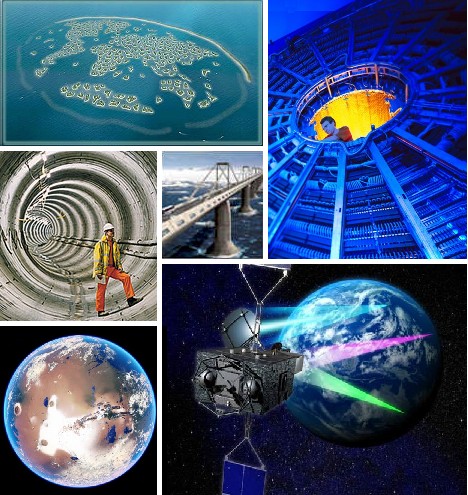
Dubai’s World Islands
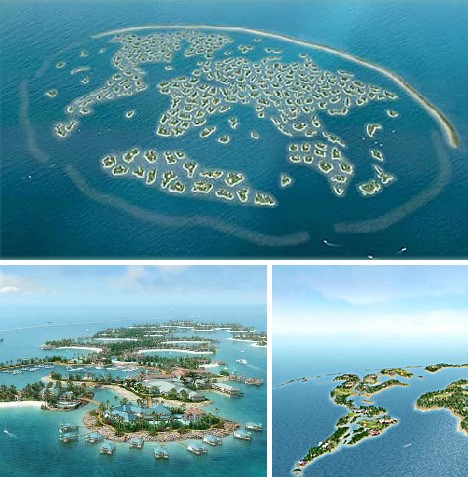 (images via: Homes Dubai and Ursi Paltenstein)
(images via: Homes Dubai and Ursi Paltenstein)
Following on the successful completion of other offshore artificial island communities like the Palm Islands, Dubai’s World Islands was intended to be even more ambitious, not to mention larger. Imagine owning a private island in the shape of a country or continent, surrounded by the warm waters of the Persian Gulf – and your equally “worldly” neighbors?
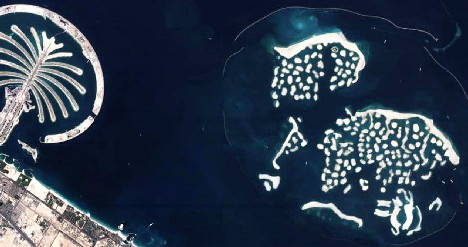
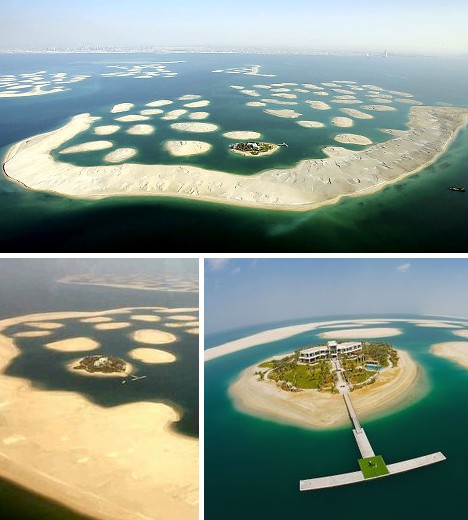 (images via: ESA and Amazing Dubai Islands)
(images via: ESA and Amazing Dubai Islands)
While Dubai’s vision of a 300-island floating world may someday come to fruition, things aren’t so rosy at the moment thanks to the ongoing world economic crisis. As of late summer 2009 only a single island has been developed and it belongs to Dubai’s ruling Sheik; “the rest looks like a pile of muck” according to a local realtor. With property prices crashing by 50 to 75 percent, many of Dubai’s spectacular construction projects have been put on indefinite hold if not canceled outright.
Bering Strait Bridge
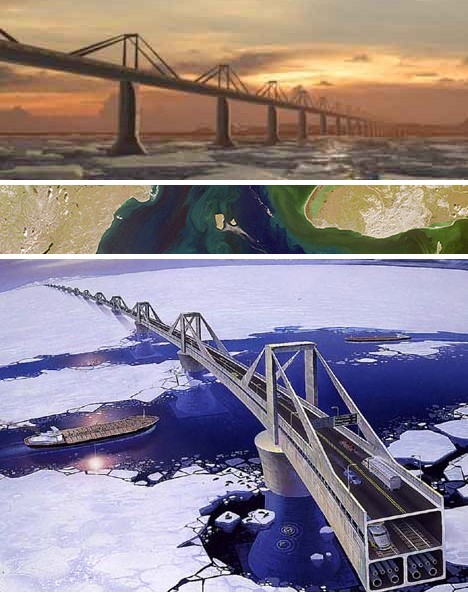 (images via: Mr. James and William Bacon)
(images via: Mr. James and William Bacon)
A bridge across the Bering Strait connecting Russia and Alaska? No, this is not a repeat from 11,000BC. OFF Architecture won the 2nd Prize in the Professional Category at the 2009 Bering Strait Project competition (yes, there is such a thing) with their grandiose and green bridge-tunnel combo. The design would greatly reduce circulation between the Arctic and North Pacific Oceans, thus cooling the former and mitigating the effects of global warming. Or so they say.
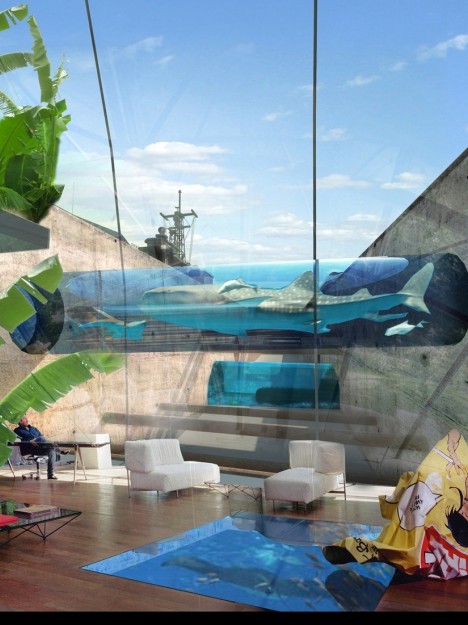 (image via: Inhabitat)
(image via: Inhabitat)
The 53-mile wide Bering Strait is surprisingly shallow – it was a natural land bridge back in Ice Age times – so OFF Architecture’s design would reach from just above the water’s surface down to the ocean floor 100 to 150 feet below. Such a design would necessitate circular “pass throughs” for migrating marine mammals and whales. The thought of a whale having a panic attack inside one of the tunnels gives a whole new meaning to “Thar she blows!!”
Large Hadron Collider
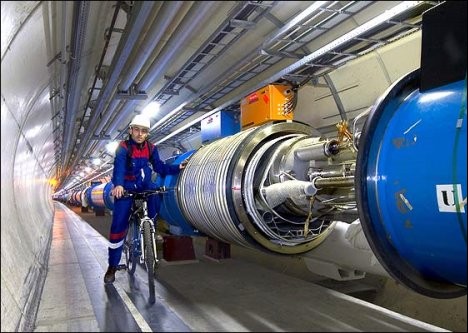
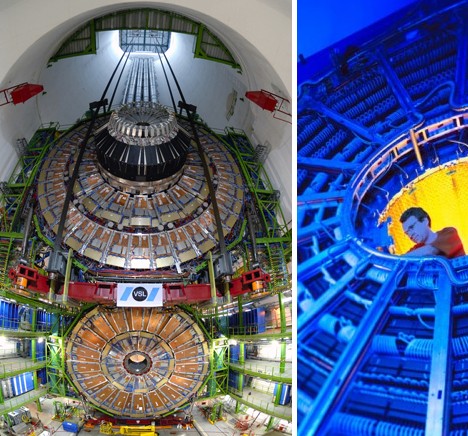 (images via: BBC, Discover Magazine and Device Daily)
(images via: BBC, Discover Magazine and Device Daily)
The Large Hadron Collider, or LHC being built by CERN is without question the largest and most complex machine ever constructed by Man. It has to be – the universe doesn’t give up its deepest secrets very easily. The LHC is the world’s largest refrigerator, requiring 10,080 tons of liquid nitrogen and nearly 60 tons of liquid helium to bring the temperature of the collider’s huge electromagnets down to -271.3°C (1.9 Kelvin). Want more? The interior of the LHC’s ring tunnel is the emptiest place in the entire solar system – the machine’s particle beams will travel through an ultra-high vacuum with ten times less pressure than you’ll find on the Moon.
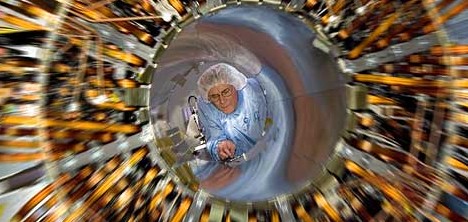
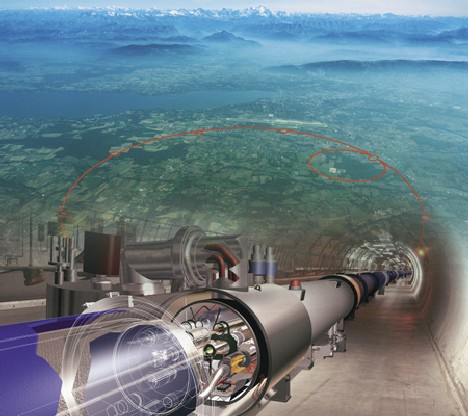 (images via: Sun HPC)
(images via: Sun HPC)
Huge as it is, the LHC doesn’t look too impressive from the air since the actual 17-mile (27 km) tunnel lies buried an average 330 feet (100 meters) underground. It IS big however – part of the ring is in France; part is in Switzerland. Since this short blurb gives only a hint of the LHC’s workings, check out this Schoolhouse Rock style rap on the LHC from TeacherTube:
Gotthard Base Tunnel
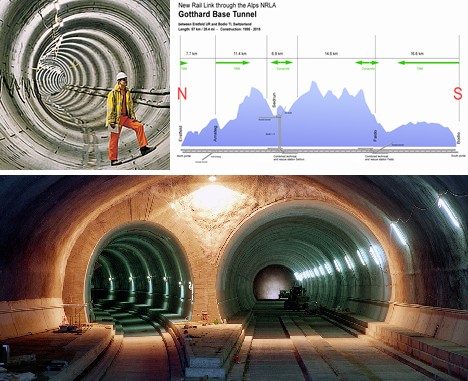 (images via: WTC 2013 and Popular Science)
(images via: WTC 2013 and Popular Science)
The 95.3-mile (153.5 km) long Gotthard Base Tunnel network now being drilled out beneath the Alps, when finally completed in about ten years, will be the longest underground tunnel ever constructed. High-speed trains traveling at 155 mph (250 kph) will significantly reduce travel times between Zurich, Switzerland and Milan, Italy while at the same time relieving the bottleneck of commercial and passenger traffic now clogging existing mountain highways and train lines. Hannibal would most definitely approve.
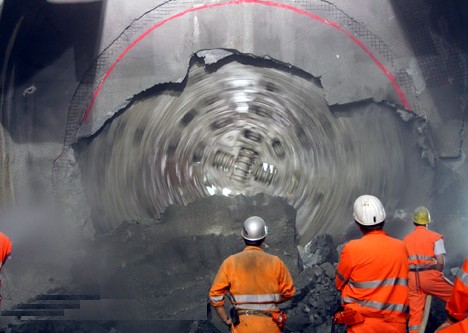 (image via: Railway Technology)
(image via: Railway Technology)
The most difficult portion of the tunnel is the 57 km (35.4 mi) stretch that will run nearly 2,000 feet (600 meters) under the Gotthard massif below the existing Gotthardbahn track. It’s estimated that 459 million cubic feet (13 million cubic meters) of crumbly, porous rock will have to be removed during the course of tunnel construction – that’s enough to fill the Great Pyramid of Giza five times over. In the above image, one of the huge tunnel-boring machines is shown just as it breaks through to one of the completed sections of the tunnel.
Japan-Korea Undersea Tunnel
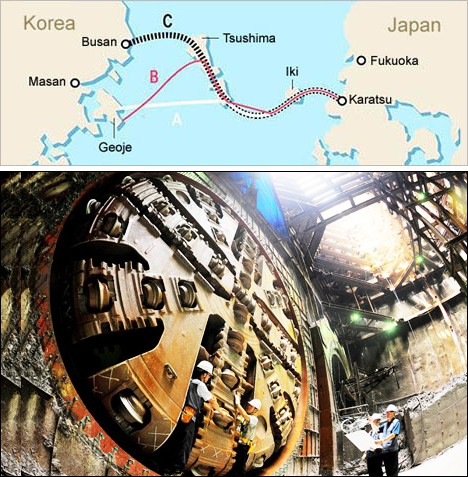 (images via: InventorSpot)
(images via: InventorSpot)
Though the shovels have yet to shift any dirt, the blueprints are ready for construction to begin on one of Asia’s most momentous megaprojects: the Japan-Korea Friendship Tunnel. Or the Korea-Japan Friendship Tunnel – the fine details are still being discussed. Should the project get the nod from the politicos, work will begin on joining the southwestern Japanese city of Karatsu with the South Korean port of Busan with a 79-mile (128-km) train tunnel. The distance is more than three times that of the Anglo-French “Chunnel” but the technology is proven. As for North Korea’s take on the project, either Kim Jong Il hasn’t been told or everyone’s scared to bring up the subject.
The wags at Asiadog have put together a nifty video of what they refer to as the Korea < -> Japan Undersea Tunnel, backed by a bouncy beat:
Korea <-> Japan Undersea Tunnel, via Asiadog
Space Solar Power Station
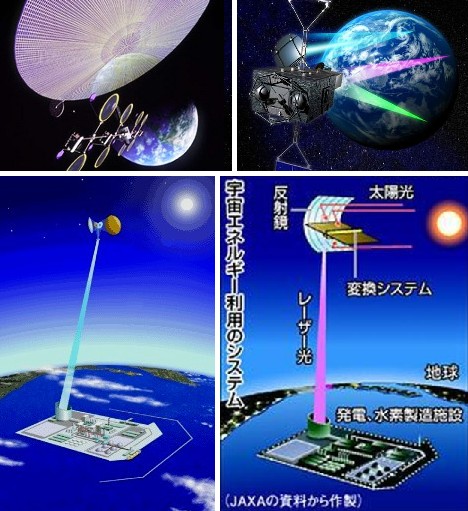 (images via: Inhabitat, Treehugger and Pink Tentacle)
(images via: Inhabitat, Treehugger and Pink Tentacle)
The challenges and difficulties involved in large-scale orbital construction projects are immense… yet someday they will be tackled as the demand for interplanetary spacecraft, space elevators and orbiting power stations becomes irresistible. The latter – a solar power station in geostationary orbit – is now on the drawing board and has been given a sky-high price tag of 2 trillion yen ($21 billion).
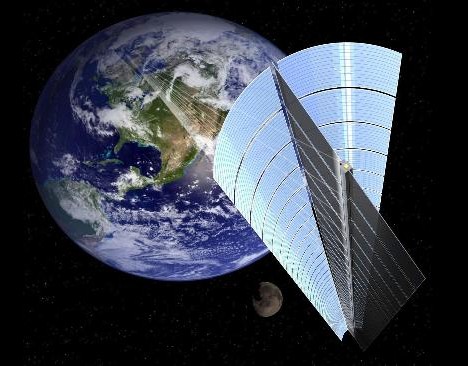 (image via: Bloomberg)
(image via: Bloomberg)
The project, conceived by the Japanese government and industry researchers, will see a space-based solar power station built in orbit 22,360 miles (36,000 km) above the earth. The station will generate 1 gigawatt of power from sunlight and beam the energy down to a receiving station where it can be used to power almost 300,000 homes.
Terraforming Mars
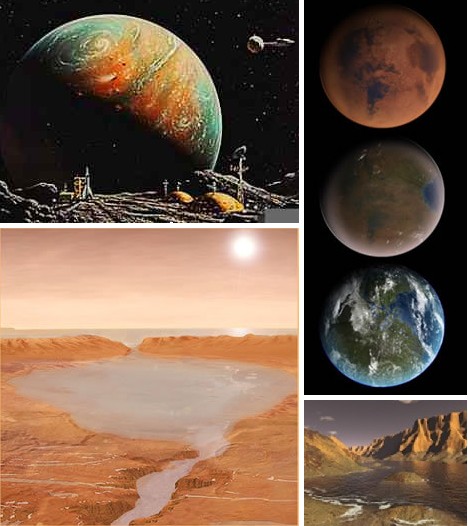 (images via: All These Worlds, Daily Galaxy and Electro-plankton)
(images via: All These Worlds, Daily Galaxy and Electro-plankton)
The most extreme engineering project in the history of the world will be performed OFF the world… on Mars. A variety of schemes have been floated over the past few decades with the intent of making Earth’s nearest neighbor more amenable to life of the earthly variety – in other words, Terraforming. Naturally the scale is huge – comets may be redirected to impact the Red Planet to provide water for oceans, which would be seeded with algae in order to boost the oxygen content in the Martian atmosphere. Other schemes entail the placement of giant orbiting mirrors to focus sunlight upon Mars’ polar icecaps, thus releasing liquid water and gaseous carbon dioxide to kick-start a greenhouse effect.
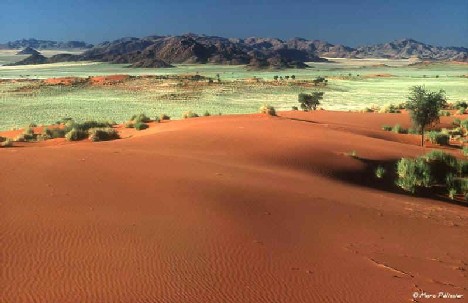
 (images via: LA 2101 and WonderlandJACK)
(images via: LA 2101 and WonderlandJACK)
Terraforming Mars is no pie-in-the-sky scheme; it could be the salvation of our species should our actions on Earth continue to reduce our home planet’s livability. It would be most fitting if someday, as predicted/depicted in The Million-Year Picnic, a short story from Ray Bradbury’s book The Martian Chronicles, this scene should take place: A father answers his children’s desire to see Martians by suggesting they look into the canal their boat is floating on… in which they view their own reflections.
Source:http://weburbanist.com/